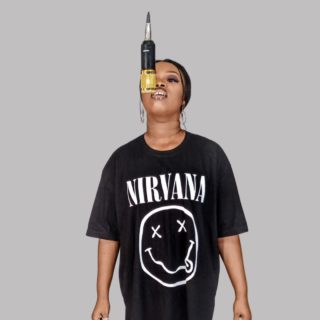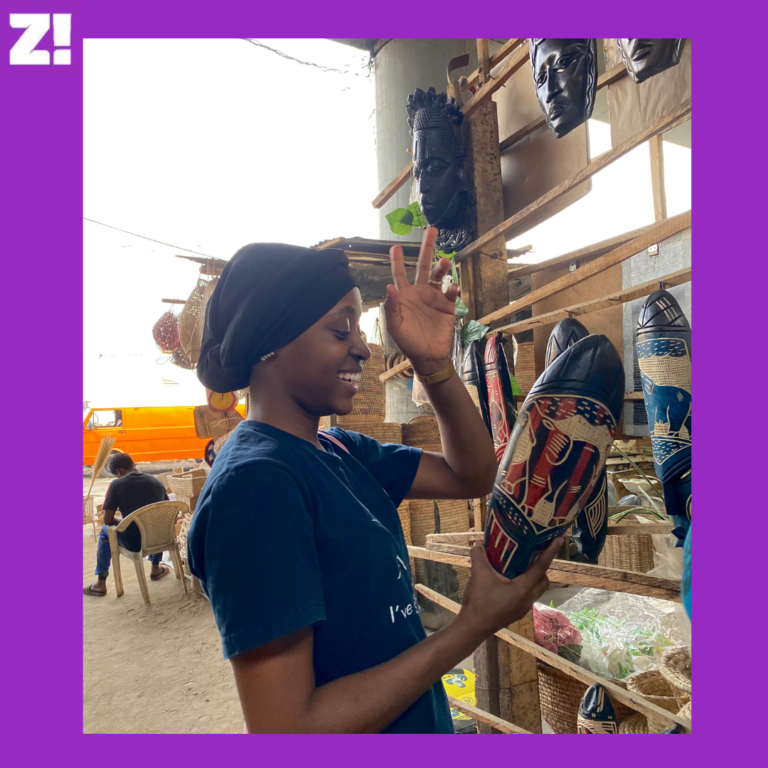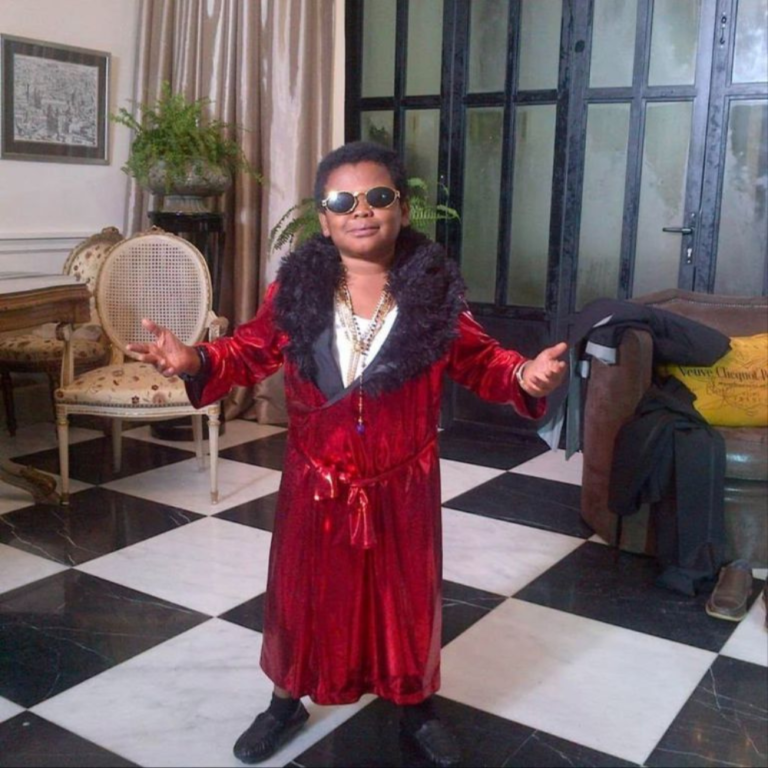Creator Spotlight is a weekly series celebrating young Nigerians in the creative industry doing unique things. Everyone has a story, and Zikoko wants to tell it.
Hi, I’m Moyomade a 21-year-old graduate of law. I don’t intend on practising. In fact, it’s of no use to me. I studied law because my father wanted me to. I had a high post-jamb score, and they didn’t want me to “waste” it. My favourite food is jollof rice. I don’t like pounded yam, even though I grew up eating it every Sunday. It’s a family tradition.
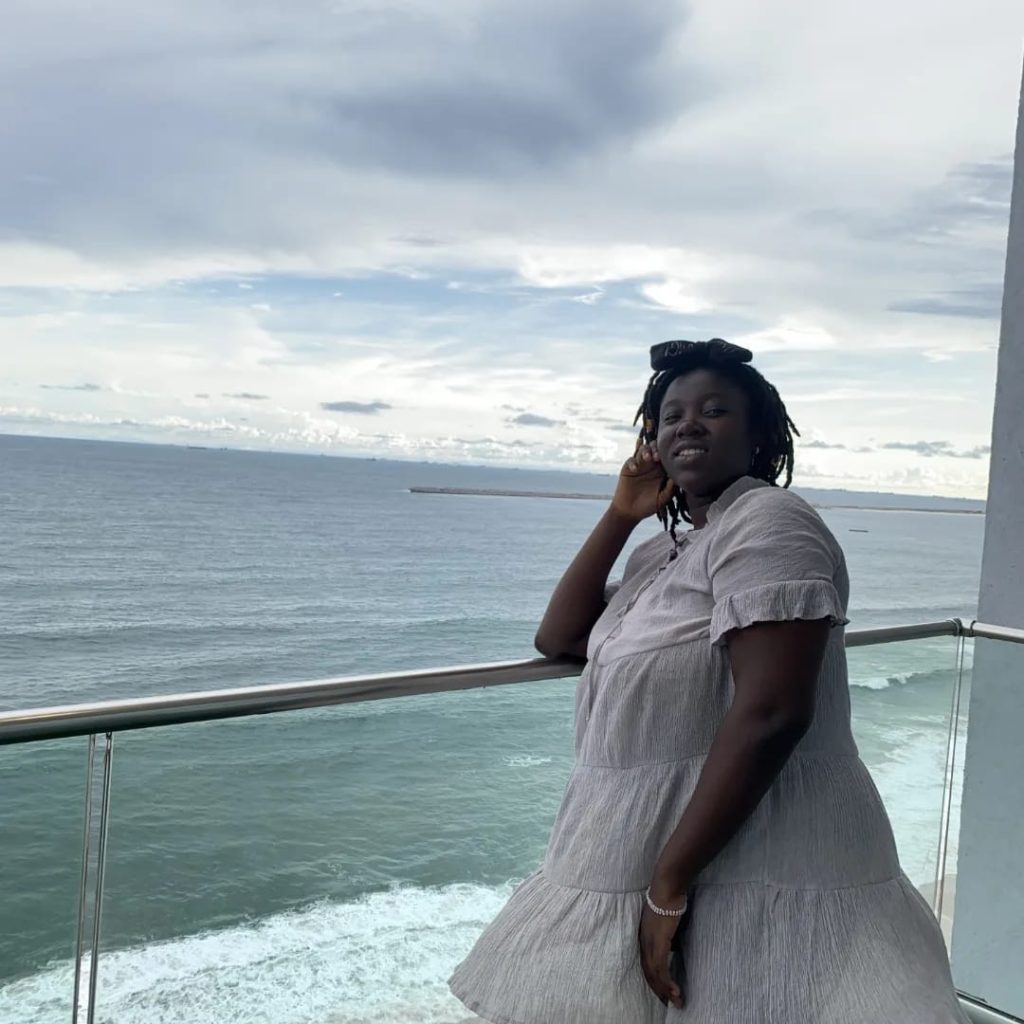
How can you not like pounded yam?
Pounded yam, for me, is a symbol of patriarchy. I grew up in a place where the women were always expected to do the pounding every Sunday. They made it clear if I didn’t help out, I couldn’t eat it. I wasn’t down for that, so I stopped eating it. I also don’t eat noodles at all.
Noodles? That’s not very Gen Z of you
I know, right? I actually don’t think I’m Gen Z enough because I don’t display Gen Z behaviour. For example, I don’t know how to use Snapchat. I genuinely do not understand people who use it to communicate.
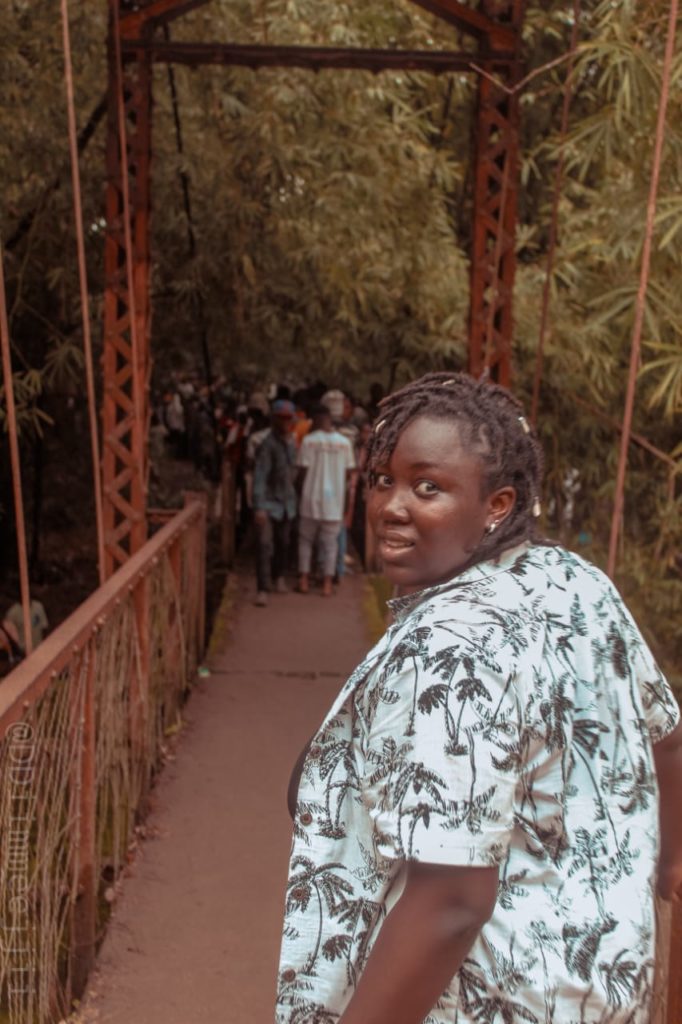
We’re just there for clear pictures. What do you now enjoy?
I consume a lot of Asian media. From Japanese, Thai, Taiwanese, sometimes, Chinese, occasionally, and a lot of Korean. I don’t keep up with K-pop, though. I enjoy writing and designing, and I also love sleeping. I mean, it’s good for my brain. I also spend 90 per cent of my time indoors.
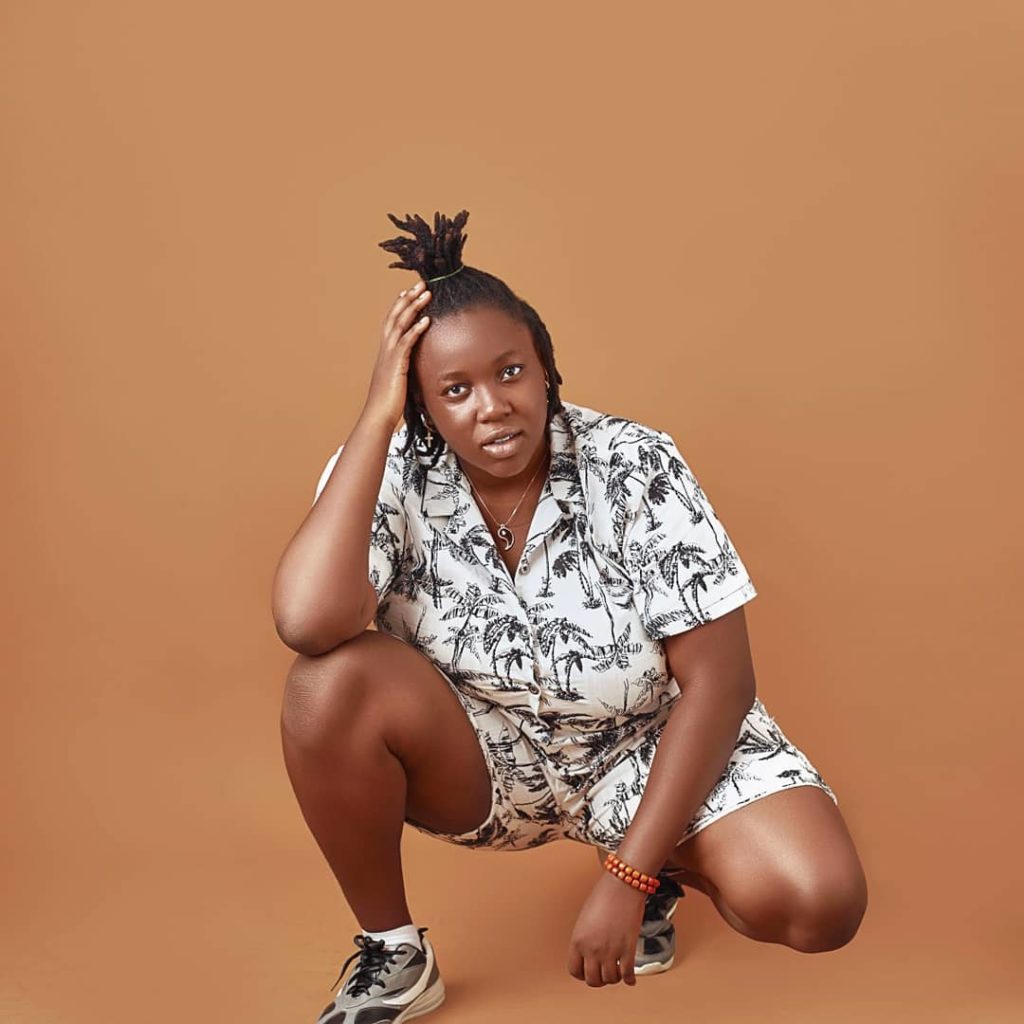
RELATED: What She Said: I Haven’t Stepped Out of My Front Door in 10 Months
How do you get away with that?
Everything I do is remote. I barely have business that takes me to the outside world. Being outside stresses me. Practically speaking, in a week, I spend like three hours outside.
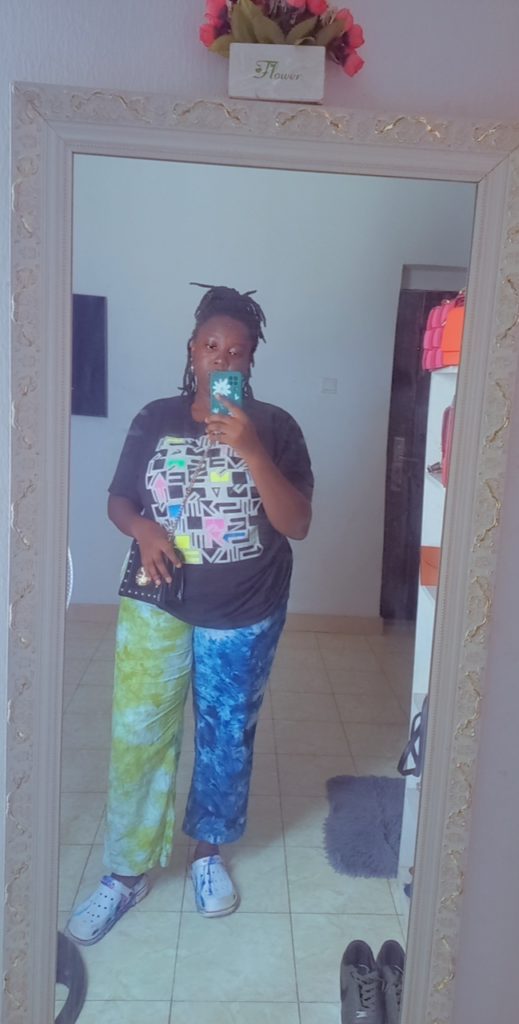
What? Are you serious?
I’m serious. But then, I realised living a sedentary life is a good way to kill yourself. So I walk at least 6k steps per day, mostly in my living room. My three hours outside are when I go to buy dye and fabric. I always have a budget and know exactly where I’m going. I get on a bike, get everything I need, and in like an hour, I’m back home.
In an hour? This can’t be Lagos
I don’t live in Lagos. I wake up every day with the aim of living a soft life, and being outside of Lagos helps. There’s no traffic, so I can easily go out and come back in. Trees and rivers surround where I live — it’s very serene. I realise I can’t do the whole hustle culture Lagos life demands. I desperately want to live a quiet life, and I’m trying my best to. Everything I do actually aligns with that. I write and make adire, and they both only require creativity.
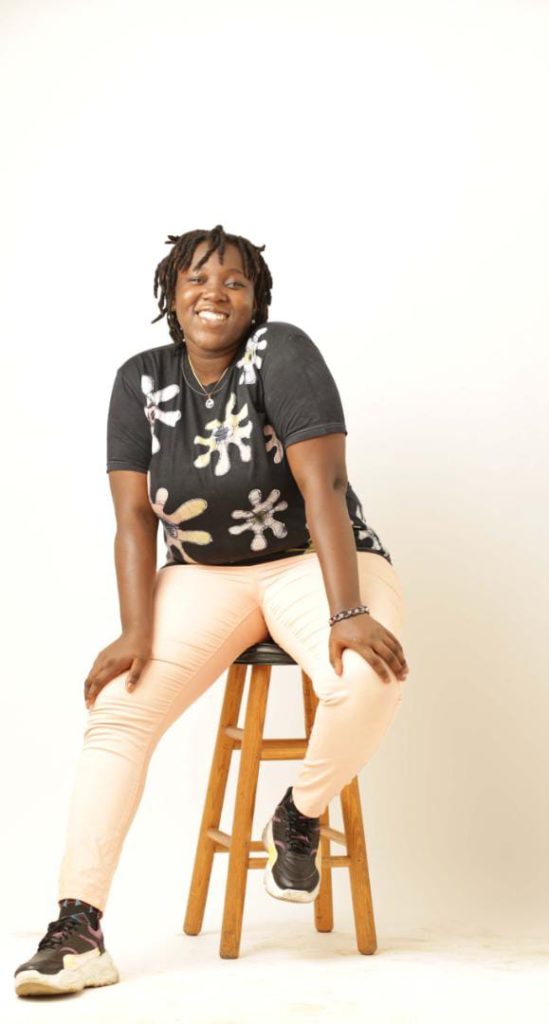
Must be nice. How did you fall in love with adire?
In 2020, ASUU went on strike. I was in year five. I needed to learn something, so I went to the Nike Art Gallery to learn pottery. But they didn’t have the resources for it, and I had to choose between adire or wood making. I made my decision and bought the required instruments. It was hard to actually fall in love with it because the environment was highly patriarchal. I spent a lot of time crying. I’d call my late dad, and he’d say, “If it’s that toxic, leave. I’m not forcing you to earn money”. But I was really determined to learn, so I stayed there, kept my head down, and in the long run, fell in love with the culture. I fell in love with the orisa Yoruba people worship. You never finish learning at Nike Art, they register you as a student for life, so you have to take the initiative to leave when you feel you’ve learned enough.
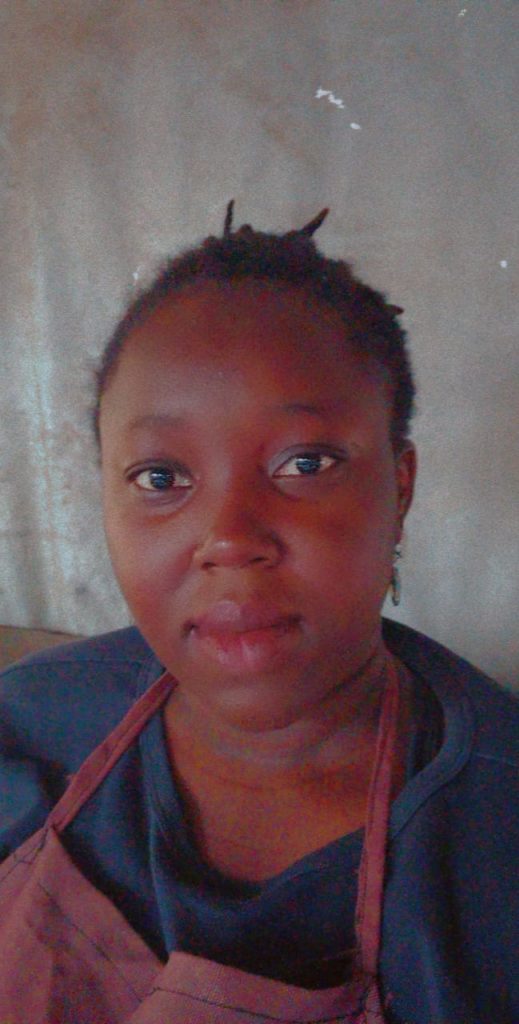
Did you leave?
Yes, I spent more than the required time, to the point where I started creating designs for my boss for free. By that time, I was no longer a beginner who needed to be shown the ropes. What was the point of staying there and creating designs that would never be credited to me without getting paid for it? So, I decided to start making my own designs. I’m at the stage where I can do brushwork, stamping and stencils if I want, but I prefer to be organic. 90 per cent of my work are custom-made.
How does custom-made adire work?
When someone comes to me to make adire, I ask them if they want a new or existing design. I sketch out the design — sketching was an important part of my learning process for a month. While sketching, you get to perfect your line work. It’s basically drawing on clothes. I show my clients the design, and if they like it, I proceed to get the materials. You can also use foam to cut out the designs when it has to be duplicated. If the client wants detailed designs, I’d use foam. If not, I’d freehand it.
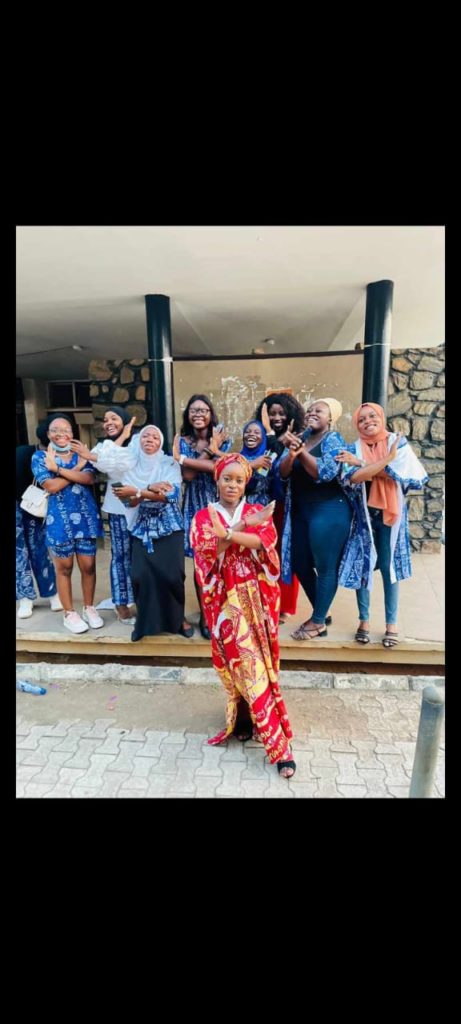
That sounds like a lot of work
I really like the dyeing part of the process. I enjoy making adire because of that and it’s Yoruba culture. I’m a very cultural person. I’m an Osun devotee, and this is a way to connect with our ancestor’s work and clothing from before the colonialists came, and it resonates a lot with my spiritual practices. Dyeing clothes is honestly fun. Sometimes, you have to mix the colours yourself, taking colour theory into account with everything you make. People just want to wear adire, they don’t really know how much thought goes into it. The dyeing process is very delicate, and any mix of colours can change everything. I’m constantly thinking about things that would make the clothes interesting but still very comfortable and functional. I ask my clients if they’re ordering for a specific event and their response into consideration, so they won’t have any reason to complain about the design in the future.
Have you ever made a mistake with colour before?
Oh yes, I’ve made plenty of mistakes. When I started learning, I experimented with many of my mother’s wrappers and clothes. It helped me grow in the way I mix my colours. Now, I know better. I also take better care of myself because I work with chemicals, so I always have a nose mask on. I can stand the smell, but I have to be considerate of my lungs and body. I also use gloves because caustic soda can burn your hands. And you have to know the amount of caustic soda you need because too much will make your clothes tender.
This sounds risky though
I’m used to it. For tie and dye, the dye has to be much thicker, so you have to be careful not to get colours in the places you don’t want the colour to be in. With Batik, you’ve already waxed out those places. With tie and die, any small mistake and the customer’s cloth is ruined. Next thing, Gobe.
What’s your favourite work so far?
I have a lot of favourites because I don’t choose based on what it looks like. I’m happiest when I make clothes I feel good about. I’m an overachiever, so when the client is like, “Moyo, I wore this thing in London”, I’m happy. Karimot Odebode, a Nigerian poet and feminist whose work takes her to many different countries, contacted me to make her clothes for a book launch. I made clothes for her and her team members. I was very happy about that.
I also made a whole Encanto-themed adire when the movie was trending. I love all the characters and felt they all had individual designs for clothes. I picked out some of them and remade them in a traditional way. I made one for Bruno, Camillo and Dolores. It was really fun creating them.
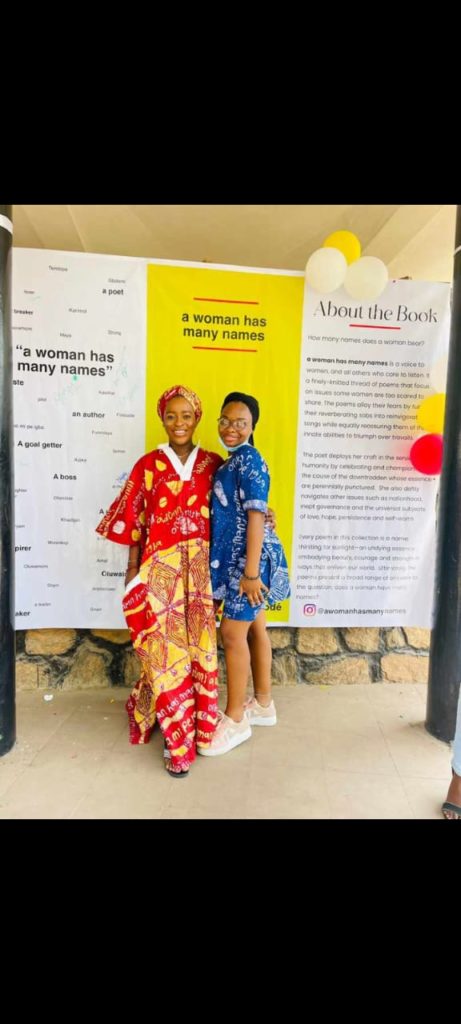
That sounds so cool. What’s your favourite song from the Encanto soundtrack?
We don’t talk about Bruno for sure. The song did a great job of shining a light on who Bruno really was.
Facts. Roughly, how many adire products have you made since 2020?
I’ve made over 100 yards. I really can’t count.
You mentioned making adire is spiritual for you. Does it feel odd to make money from it?
Absolutely not. While I was working at Nike Art, I wanted to learn Adire Eleko, but everywhere I went, they’d refused to teach me because I didn’t come from an Idile Alaro, a family of Adire people. Yoruba families were divided back then. My name is Moyomade, and Ade is royalty. There are the Oloyes — the chiefs — the Oguns and Akins, who were warriors. They cited my genealogy as a reason not to teach me the ancient style of Adire making.
These same people would teach any white person willing to throw a couple of dollars around. I eventually went to the Ifa temple to see the priestess, and she told me not to mind them for withholding trade secrets and connected me with someone who’d teach me. Since the people at Nike Art would give white people clothes for free, I thought I could as well put a price on my work and not feel bad. Frankly speaking, we should be charging more, especially to white people. They used colonialism to take away a lot of our traditions. The least they can do is pay for the culture they are accessing now. I don’t feel bad about it at all.
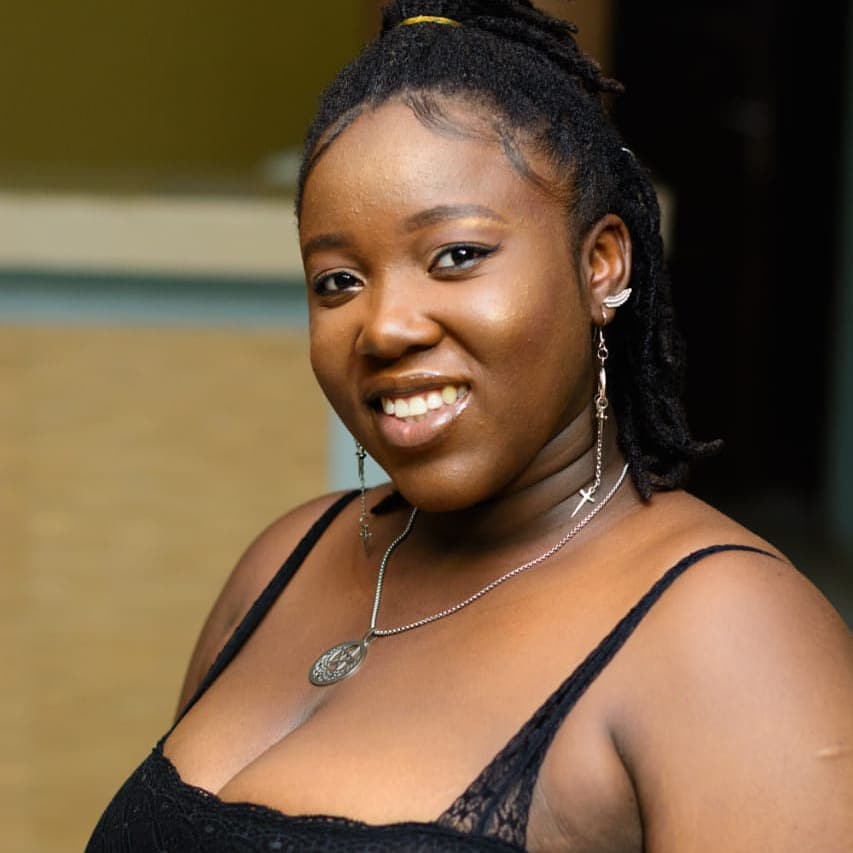
Let’s talk a bit about you being an Osun devotee. How did that happen?
I was raised Christian. My mom is a church deaconess. But my dad, bless his late soul, was a man of tradition. He’d come to church or the mosque but leaned more towards traditional religion. In 2020, he had his first Odun Ifa, and I was the only one who followed him. The priest told him I belonged to Osun. They called out to me first, and it was right to honour that invitation. In 2021, I went to the Ifa temple in Ife, wearing my consecrated beads, and prayed in the shrine. But I don’t practise in gatherings anymore because I don’t want to be involved in any kind of patriarchal thinking. No matter the religion, people will always infuse their beliefs. The Yoruba orishas are not only non-gendered, they’re also not homophobic, transphobic or misogynistic. But people interpret things based on their social conditioning, and they’ll always project that no matter what.
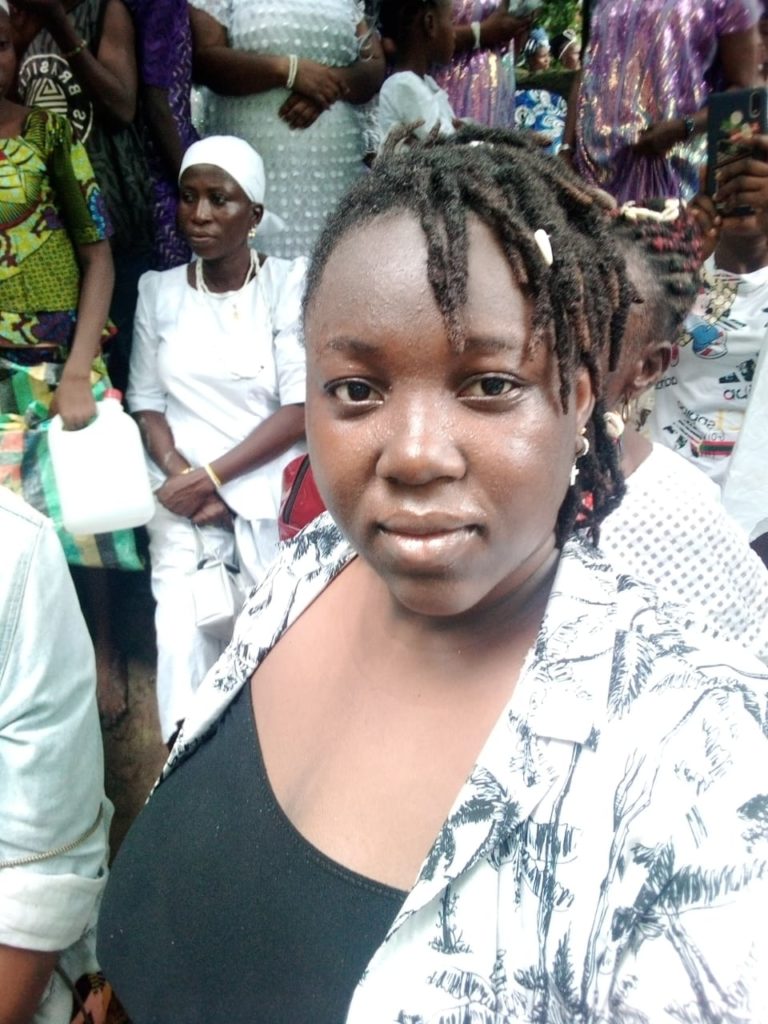
And your mum was chill about your conversion?
She was not. I didn’t mention it to her. And she pretends she doesn’t notice when I wear certain things like my beads. We’re okay now.
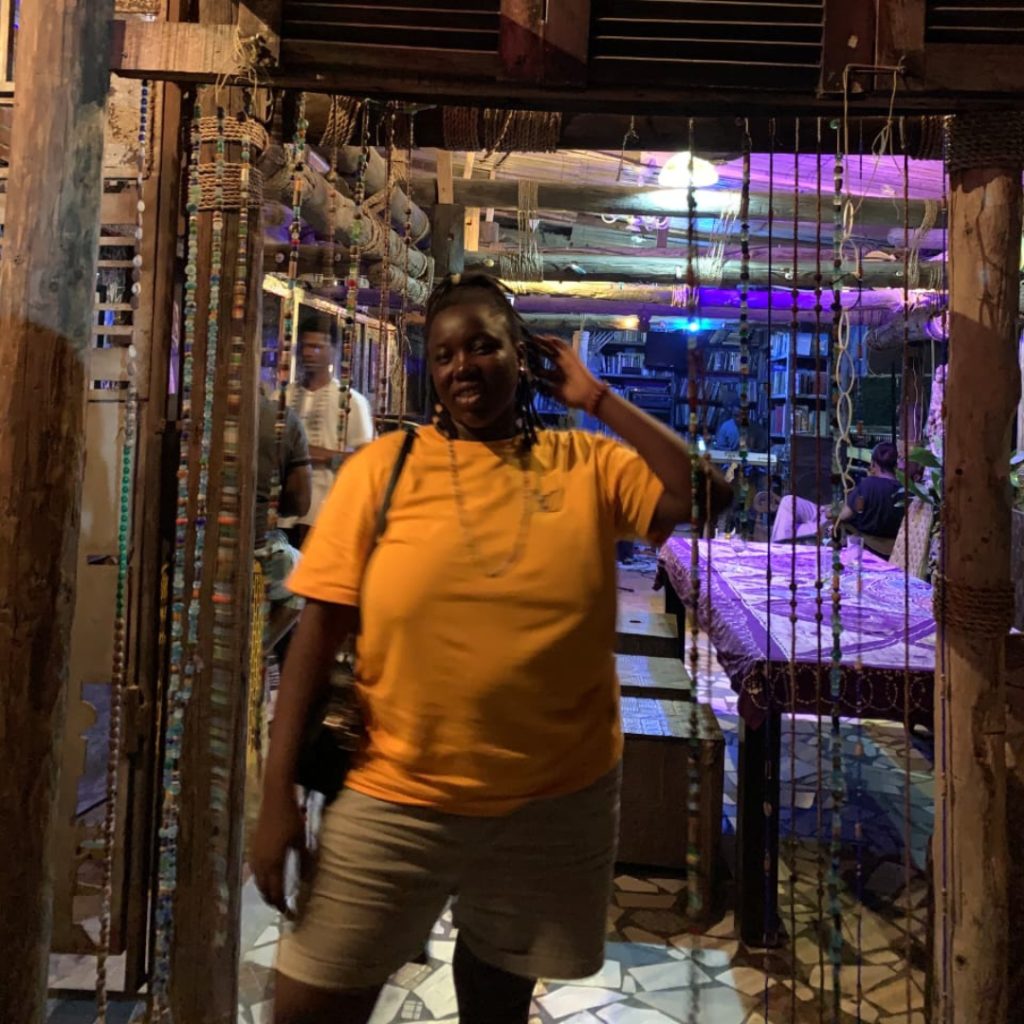
A win is a win. What’s been your favourite career moment so far?
I have none. When I feel joy, I feel joy; that’s just it. I do have least favourites, though.
Like what?
When someone extorted my friend and me.
A guy came to the Nike Art workshop and contracted us to work on 100 t-shirts, 12 bucket hats and socks. My friend happened to know him on a personal basis. I thought it was a good deal and made the mistake of not asking her how much she charged him. We finished the work in three days and nights, and he paid us both ₦25k to share. That’s the worst deal I’ve ever done in the adire business. I was a beginner then.
What’s the best deal you’ve got so far?
It has to be the book launch deal. It was worth my effort. I told her the price, and she actually accepted. So, I wasn’t stressing about cutting down on this or that. When you’re young, people want to make you feel small. But I’ll always charge my worth.
Even though they’ve seen your work, people will look at you and tell you they need someone with more experience. I kept trying to break into a market full of people who’ve done this for the longest time. Last year, I had to find a way to market to the younger generation.
How?
I’m not an Instagram person, but I have to post there. I also do a lot of one-on-one marketing, which is one of the things I hate most in this life. I even started making TikToks of my process. I’m actually at the point where if I post, I post. If I don’t post, people who know what I do will still come to me. I’m okay right now, but it’s not completely where I want to be.
Where would you like to be in a couple of years?
I don’t really foresee a future for myself in this country. So, it’s hard to picture. Whichever country I decide to settle in, I hope that I can build a mini factory there. I’d love to go into textiles properly, making my own fabric from scratch, produce my own organic dye. Because of this, I studied how to make the Indonesian and Malian types of batik online. It’s something I’d like to heavily invest in even if it’s here in Nigeria.
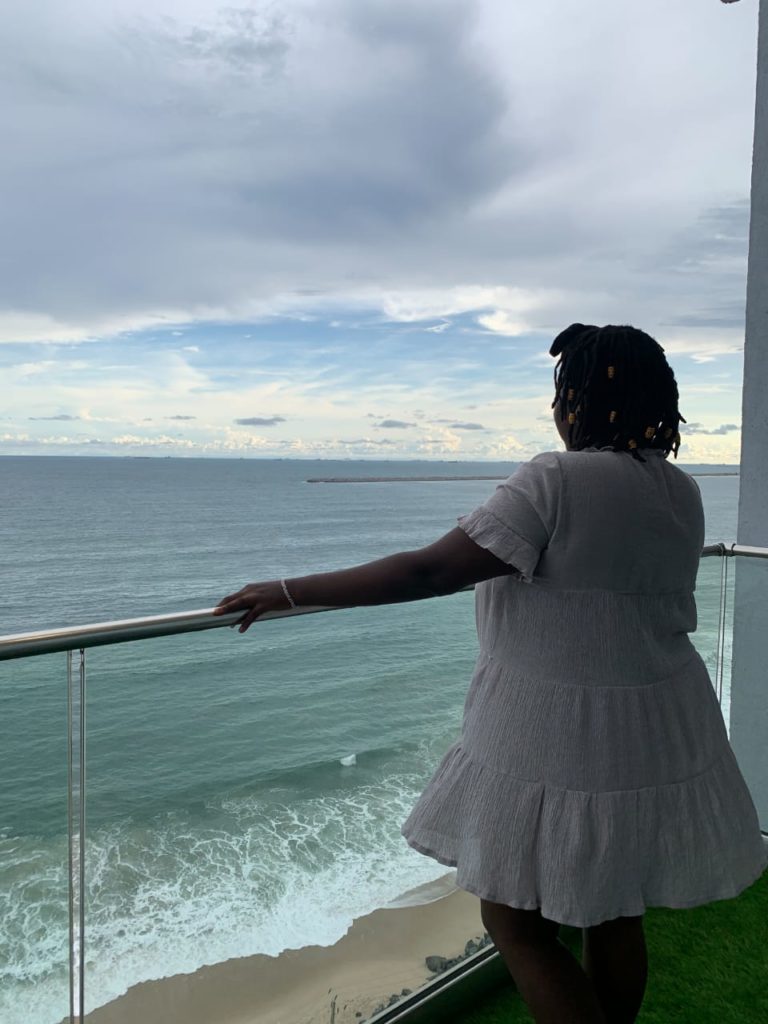
What’s something you wish people told you before getting into adire making?
You’ll hate it. You work with people less exposed than you, who think differently from you, and if you can’t stand it, you’ll drop out. Also, finding a market will be hard if you don’t have enough connections. It’s very easy to get stuck in a cycle of stagnancy. But it you prioritise yourself, with time, you’ll love it.
READ ALSO: Creator Spotlight: Jeiel Damina on Learning From Olive, the Fictional Character She Portrays

